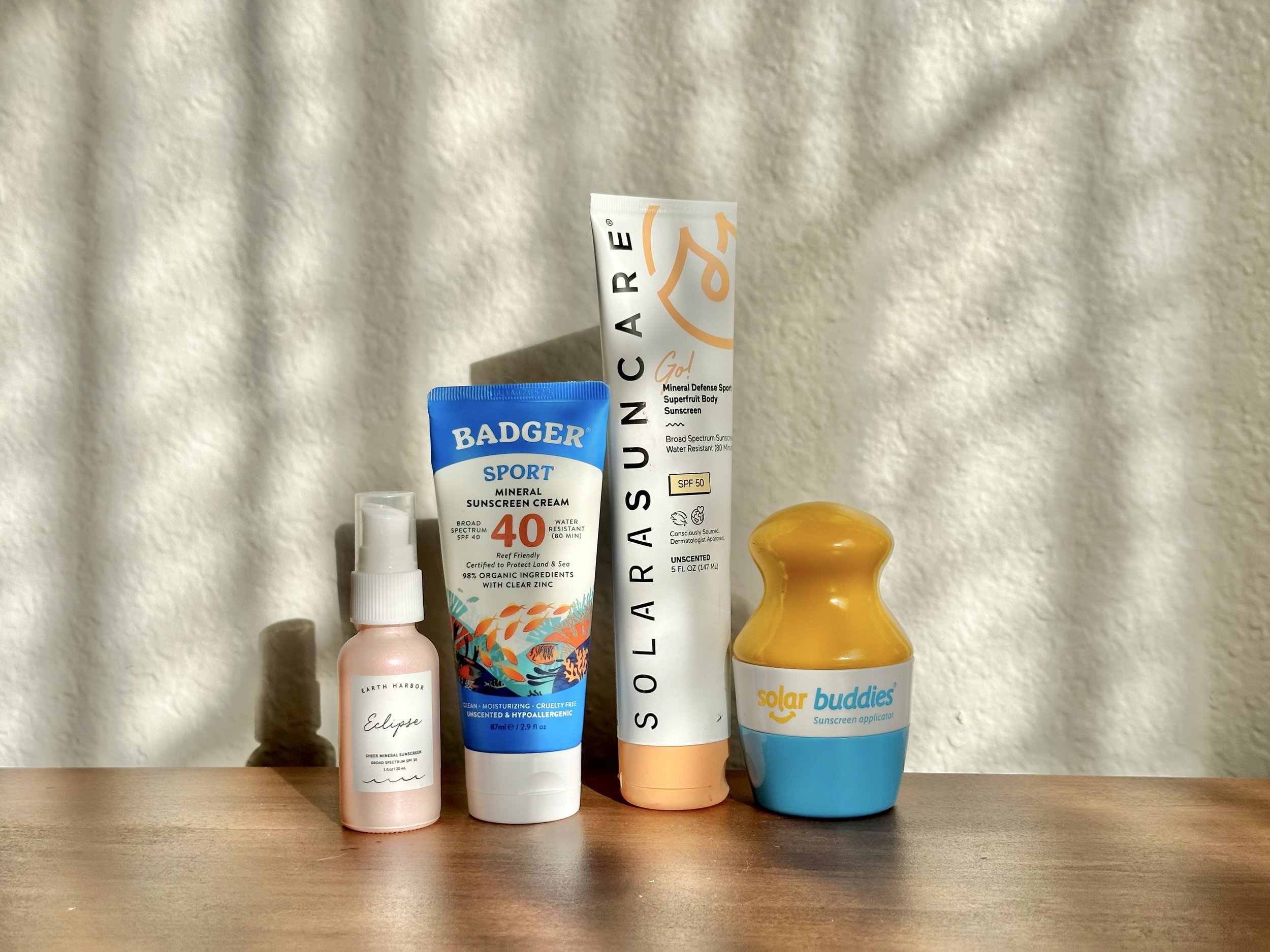All About Sunscreen
As the sun's rays grow stronger with the approaching summer months, it's time to arm ourselves with the ultimate defense against sun damage: Sunscreen.
Navigating the world of sunscreen can be daunting, with terms like chemical vs. mineral, non-nano, and titanium dioxide floating around. Fear not, for I’m here to decode and empower you to make informed choices for your skin's health and the environment.
Chemical vs. Mineral: Understanding the Difference
Chemical sunscreens work by absorbing UV radiation and converting it into heat, while mineral sunscreens create a physical barrier by reflecting and scattering UV rays. Chemical sunscreens often contain ingredients like oxybenzone, octinoxate, homosalate, and avobenzone, which have potential hormone-disrupting and a negative environmental impact. On the other hand, mineral sunscreens typically contain zinc oxide and titanium dioxide, offering broad-spectrum protection without the same health and environmental risks.
Avoiding Titanium Dioxide: A Controversial Ingredient
While titanium dioxide is commonly found in mineral sunscreens, its safety has come under scrutiny in recent years. Concerns have been raised about the potential for titanium dioxide nanoparticles to penetrate the skin and cause cellular damage. To error on the side of caution, many consumers opt for titanium dioxide-free sunscreens or those labeled as "non-nano."
For more information, read my Titanium Dioxide Blog post.
Why Non-Nano Matters: The Importance of Particle Size
Non-nano refers to mineral sunscreen formulations where the particles are larger than 100 nanometers in diameter, greatly reducing the risk of absorption through the skin. By choosing non-nano sunscreen, you can enjoy the benefits of mineral protection without worrying about potential health implications associated with nanoparticle penetration.
Recommendations: Sunscreens You Can Trust
When it comes to selecting a sunscreen that ticks all the boxes—effective protection, safe ingredients, and minimal environmental impact—look no further than brands committed to transparency and integrity. Seek out options that use non-nano zinc oxide as the active ingredient, are free from harmful chemicals like oxybenzone and octinoxate, and prioritize sustainability in their packaging.
Top recommendations:
1. Badger - Known for their natural and organic sunscreens, Badger offers a range of non-nano zinc oxide formulations suitable for the whole family.
2. Pipette - Committed to baby-safe ingredients and marine-friendly mineral sunscreen, Pipette’s mineral sunscreens provide reliable protection for the whole family.
3. Mad Hippie - With a focus on luxury and performance, Mad Hippie’s mineral sunscreens combine effective UVA/UVB protection with antioxidant-rich botanicals for added skincare benefits.
You can find all of my Non-Toxic Sunscreen and Sun care recommendations at my LinkDolly.
Shopping Tips:
Opt for mineral sunscreen over chemical ones every time! Chemical sunscreens can be harmful to reefs, as they absorb UV rays instead of reflecting them. Moreover, they often contain toxic ingredients that penetrate the skin barrier. Sunscreen should act as a protective layer, not be absorbed like skincare.
When selecting a sunscreen, prioritize those with Non-Nano Zinc Oxide as the active ingredient. Nanoparticles found in some sunscreens can easily enter the skin and may have harmful effects.
Be cautious of titanium dioxide in spray sunscreens or loose powders. It's known to be a carcinogen and inhaling it can lead to digestive upset and lung issues.
By choosing sunscreens from brands like these, or following these tips you can bask in the sun's warmth with confidence, knowing that you're protecting your skin. Choose wisely, apply liberally, and enjoy the sunshine responsibly.

